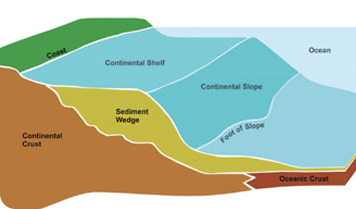How to get URL link on X (Twitter) App

 At present, there is no active mountain building in the Carpathians: both sides of the mountains are part of Europe. Earthquake locations trace the active boundary between Adria (African Plate) and Eurasia from the southern Alps to the Dinarides, with Monte Lussari at the bend.
At present, there is no active mountain building in the Carpathians: both sides of the mountains are part of Europe. Earthquake locations trace the active boundary between Adria (African Plate) and Eurasia from the southern Alps to the Dinarides, with Monte Lussari at the bend. 



 In the Jurassic the 'Greater Adria' continent was broken up and formed shallow ridges and deeper basins. The basins trapped sediments from land, so the ridges only received 'pelagic' sediments: sediments that rain down from the water column, mostly living organisms.
In the Jurassic the 'Greater Adria' continent was broken up and formed shallow ridges and deeper basins. The basins trapped sediments from land, so the ridges only received 'pelagic' sediments: sediments that rain down from the water column, mostly living organisms. 

 The Alps are piled-up rock packages of a few km thick that were offscraped from the European plate that subducted below Adria. The riders will cross remnants of two oceanic basins (the blue colors) and a small continent (the 'Brianconnais', in orange).
The Alps are piled-up rock packages of a few km thick that were offscraped from the European plate that subducted below Adria. The riders will cross remnants of two oceanic basins (the blue colors) and a small continent (the 'Brianconnais', in orange). 

 As we saw last week, the Apennines formed because Adria, the continent that underlies the Adriatic Sea and that is part of the African Plate, subducted below Europe and its sediments were offscraped. In the Alps, however, it's the opposite: Europe subducted below Adria.
As we saw last week, the Apennines formed because Adria, the continent that underlies the Adriatic Sea and that is part of the African Plate, subducted below Europe and its sediments were offscraped. In the Alps, however, it's the opposite: Europe subducted below Adria.


 Geologically, oceans, are not bodies of water, but the crust type that forms by magmatism at mid-ocean ridges. Continents continue into the sea as shelf and slope, and only then the ocean starts. The Apennines are shelf and slope rocks, the 'Ophiolites' are oceanic crust rocks.
Geologically, oceans, are not bodies of water, but the crust type that forms by magmatism at mid-ocean ridges. Continents continue into the sea as shelf and slope, and only then the ocean starts. The Apennines are shelf and slope rocks, the 'Ophiolites' are oceanic crust rocks. 
